The Ugly Side of Pastoralism
Host: Country Downs Station
Written by Nikki Elizovech – Owner, Country Downs Station.
There are many aspects of our business that we have discussed over the years, however, one of the many that we haven’t as yet, is dingoes and the role they play in our industry and more importantly in our philosophy. Many agricultural properties all over Australia have had a long and troubled relationship with dingoes for many generations of farmers. The awful and detrimental impacts that dingoes have on livestock production properties is well known in the agricultural industry, so much so that they are declared pests under the Biosecurity and Agricultural Management Act, 2007 and agricultural property owners/managers are required to be actively involved in extermination programs on their properties.
To the average person in the city or even in your larger rural towns, this seems archaic and callous and doesn’t tend to lend a positive light on farmers when discussions on this topic occur. I, personally, have had to defend our position and requirements by law to city friends who have felt betrayed by my perceived ‘willingness’ to exterminate a species! Luckily, most of my friends are good enough friends that we can have a robust conversation with completely conflicting opinions and in the end we need to ‘agree to disagree’, but still it doesn’t ruin our friendship. In saying this though, my actual opinion on the topic of dingoes is nowhere near black and white! I have seen too many of the atrocities that dingoes are capable of to have an overly protective feeling for them, but on the other hand, the biologist in me knows, understands, and supports the function and role that dingoes play in our environment.
When Kurt and I started on this journey together, i.e. when I moved out to the station, we had many arguments, and yes, I even think a couple of all out fights, about the ‘appropriateness’ of killing dingoes. Kurt’s opinion was that they kill mercilessly, indiscriminately, and often times with a cruelness that is truly awful. My opinion was that they are a part of the natural environment and as such play a role in the function of the environment and therefore should most definitely not be killed purely because they attack livestock. Well after many arguments and more importantly, many years of observing and monitoring wild dog populations on our property, we have finally found that we actually now agree on what should or shouldn’t be done with dingoes. We met somewhere in the middle!
Over the years, through implementing prior knowledge from my biological science days and our ever expanding understanding and experience in animal husbandry and land management, we have both realised that whilst wild dogs can have a massive impact on anyone’s livestock enterprise, there can be, and most certainly is on our property, a role that dingoes play in the overall health of the ecosystem. Now I know, that most farmers at this stage of reading this, will be thinking we have turned into ‘tree hugging hippies’ that have no concept of what wild dogs can do to someone’s livelihood! We understand that, however, let us explain how we came to this conclusion.
Firstly, we need to make everyone understand that there is a huge difference between the terms ‘Dingo’ and ‘Wild Dogs’. I think that most people know that a wild dog is pretty much a domestic dog that has gone feral OR is a cross between a domesticated dog from a town or community and a true ‘pure’ dingo. This is really important because even though they are considered to be one and same, the truth is they are not.
Wild dogs are far more aggressive, tend to form unstable/random packs more so than the ‘family’ packs that dingoes do and anecdotally, tend to conduct more ‘wasteful’ killings – i.e. kill for no reason other than it is fun. They can also be distinguished from dingoes through genetic analysis as they have an ever so slightly different genetic profile from the true Dingo. About six or seven years ago, we took part in a state wide research project that used genetic analysis to determine the abundance and distribution of Dingoes compared to Wild Dogs. Basically, the end result showed that the impacts from true Dingoes is distinctly lower than that of Wild Dogs. What we found on our property was that in areas closer to communities, public roads and access to natural waters, the incidence of Wild Dogs was much higher. Conversely, it was noted that the areas further away from ‘disturbance’ and natural waters showed a higher incidence of the pure dingoes.
From this project and our own observations over the years, our attitude towards dingoes has changed. We both agree that dingoes have a place and an important role in the natural environment and if we decimate that population too far, then we actually see a degradation of the environment in a mild, but very obvious way. Yet, when the population of dingoes are in a balanced and sustainable situation, we find that the ecosystem is in fact the ‘healthiest’ we have seen it. When I say healthiest, I do mean in terms of what we have seen our country and land system and not necessarily the healthiest it could be.
To explain in the briefest way possible, when we have few numbers of dingoes, we find that the wallaby population increases rapidly and they can obtain plague numbers very, very quickly. The problem with wallabies is that when in large numbers they decimate the grass populations in the area as they dig up and eat the roots of many grass species. The health of the land system is directly related to diversity of the grasses relative to shrubs and trees. If any one of these are not in balance, then the health of the overall system declines. As such, what we then see over time is more wallabies and a drier, sparser, and more desolate vista in the land system. However, when we reduced our wild dog extermination program to concentrate only on areas where dogs were a problem and left the broader environment to its own devices, what we find was really interesting. As the dingo population increased, we noticed that the wallaby population was reducing, the attacks on our livestock (both on the cattle and the pet goats) reduced and the areas where we had noticed heavy impact from wallabies the grasses were coming back.
This to us, simply proved that nature most certainly does know what is best for it and more importantly, when we as humans try to manage it in a way that is not in parallel to the natural system, we find that the delicate balance and complexity of the ecosystem is really put under a lot of pressure and this situation can never be sustained.
I do want, at this point, to make it very clear that in no way do we align our beliefs with those people who are zealous in their environmentally conservative beliefs. We and everyone in our team at Country Downs Station, unquestionably believe that the natural environment is there for all species (flora and fauna) to utilise and benefit from, but never to abuse or exploit to the detriment of the ecosystem as a whole.
We hope that today’s blog has given a little insight into the both the reasons for and against developing programs that deal with pest species. As with every situation, there is always at least two sides to every story and we believe that we are open to all of them.
We will wind up today’s blog with a couple of links to websites that those interested can go to find out more info . . . Or check up on my facts, if you are that way inclined! 😉
Oh, and some obligatory photos!
https://en.wikipedia.org/wiki/Dingo
http://www.australiangeographic.com.au/topics/wildlife/2014/04/dingo-declared-a-separate-species
https://www.slp.wa.gov.au/legislation/statutes.nsf/main_mrtitle_2735_homepage.html
https://www.agric.wa.gov.au/state-barrier-fence/wild-dogs
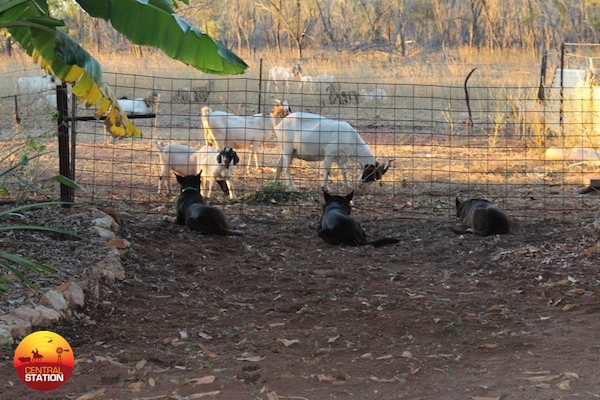 Not true dingoes, just our pets! But did you know that the Australian Cattle Dogs and Kelpies have dingo ancestry in the breeds origins!
Not true dingoes, just our pets! But did you know that the Australian Cattle Dogs and Kelpies have dingo ancestry in the breeds origins!
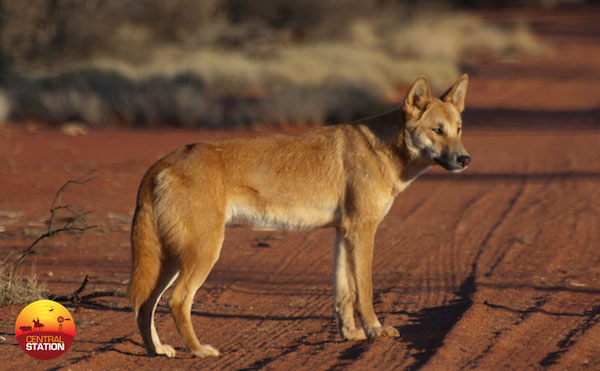 A healthy looking dingo.
A healthy looking dingo.
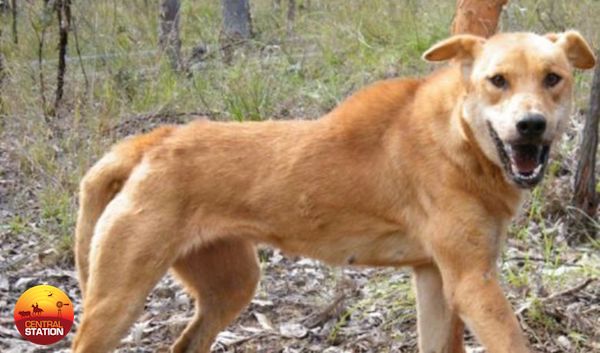 Very much a hybrid dingo-dog. Note the ‘boof’ head and ‘floppy’ ears.
Very much a hybrid dingo-dog. Note the ‘boof’ head and ‘floppy’ ears.
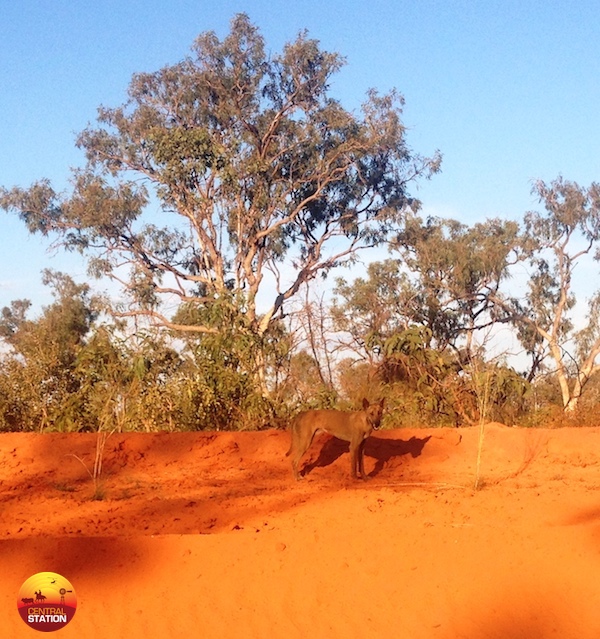 A dingo that I came across on the Cape Leveque Rd heading home one afternoon. Looks like a pure dingo, but the slight discolouration in the tail/legs/face could indicate a hybrid. Only a genetic test on this animal would reveal which.
A dingo that I came across on the Cape Leveque Rd heading home one afternoon. Looks like a pure dingo, but the slight discolouration in the tail/legs/face could indicate a hybrid. Only a genetic test on this animal would reveal which.
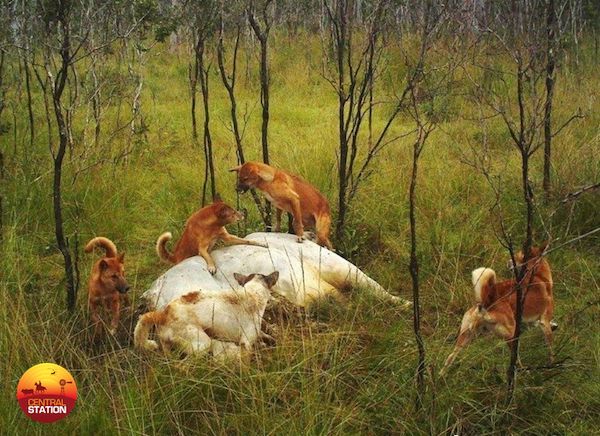 A pack fighting over the ‘kill’. The individual in the forefront is not a true dingo, which would indicate that the others, whilst look the part, are probably not genetically true either.
A pack fighting over the ‘kill’. The individual in the forefront is not a true dingo, which would indicate that the others, whilst look the part, are probably not genetically true either.
